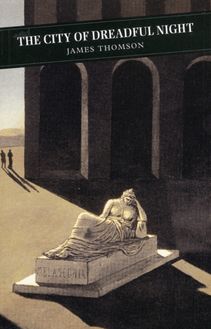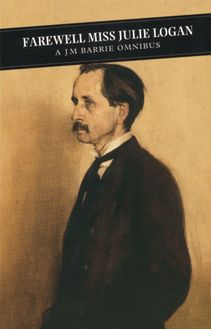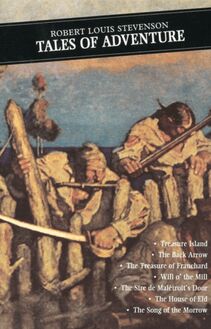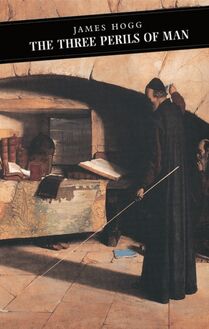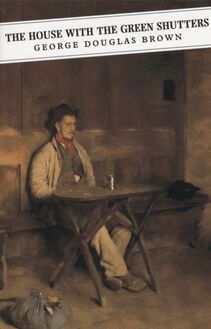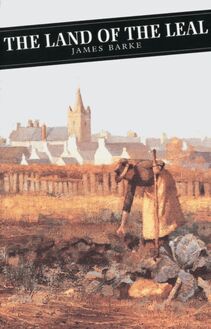Raiders: Being Some Passages In The Life Of John Faa, Lord And Earl Of Little Egypt , livre ebook
197
pages
English
Ebooks
2010
Vous pourrez modifier la taille du texte de cet ouvrage
Obtenez un accès à la bibliothèque pour le consulter en ligne En savoir plus
Découvre YouScribe en t'inscrivant gratuitement
Découvre YouScribe en t'inscrivant gratuitement
197
pages
English
Ebooks
2010
Vous pourrez modifier la taille du texte de cet ouvrage
Obtenez un accès à la bibliothèque pour le consulter en ligne En savoir plus
Publié par
Date de parution
01 juillet 2010
Nombre de lectures
1
EAN13
9781847674609
Langue
English
Publié par
Date de parution
01 juillet 2010
Nombre de lectures
1
EAN13
9781847674609
Langue
English
THE RAIDER S
Samuel Rutherford Crockett was born in 1859, on the family farm in Kirkcudbrightshire, where his unmarried mother worked as a dairymaid. He was largely brought up by his grandparents who were devout Cameronians in the Convenanting tradition and the boy had a happy childhood in the Galloway countryside he came to love and to write about in his later fiction. Educated in Castle Douglas, Crockett gained a bursary to Edinburgh University in 1876 where he studied for an Arts degree, supplementing his small income by tutoring and by writing articles, stories and poetry for various periodicals. He spent the summer of 1878 in London hoping to find work as a journalist but returned to Edinburgh and graduated in the following year. Shortly after this he was engaged as a tutor and companion to two young men and the trio travelled together on a tour of Europe. Still keen on writing, but now seekng some more permanent position, Crockett came back to Edinburgh and attended science classes at the University there. Then, in 1881, he enrolled as a divinity student at New College. Four years later, he graduated as a Free Kirk minister and in 1886 he took up his first post at a kirk in Penicuik. Tall, bearded, energetic and committed to social, cultural and educational activities of all sorts, Crockett made quite an impression in his parish. During his travelling years he had met Ruth Mary Milner, the daughter of a Lancashire mill owner, and the couple were married in 1887. They were to have two sons and three daughters in the years to come.
Crockett continued to place his essays and stories in newspapers and magazines, especially The Christian Leader , and in 1893 a collection of this work (set in Galloway) was published as The Stickit Minister and Other Common Men . This was followed by The Raiders; The Lilac Sunbonnet ; Mad Sir Uchtred of the Hills and The Play-Actress (all 1894). The next year saw the publication of the stories in Bog Myrtle and Peat Tales , and two more novels, The Men of the Moss Hags and A Galloway Herd . Wholly committed to his writing now, and having achieved tremendous success in an immensely popular literary market, Crockett resigned from his ministry in 1895 and turned to full-time writing. His enthusiasm for Christian socialism found expression in Cleg Kelly Arab of the City (1896) which was set in the slums of Edinburgh. Crockett continued to publish in periodicals, including the prestigious The Cornhill , and over the next 18 years he produced seven books for children, three further collections of stories and another 43 popular novels, some set in contemporary times and many others as historical romances.
The author established himself at Torwood House near Peebles where he amassed a major library. Having become friendly with J. M. Barrie, Andrew Lang, R. L. Stevenson, the Gosses and Rider Haggard, Crockett was well known in literary circles in both Scotland and England. He continued to travel widely, spending time abroad and setting some of his books in France and Spain. In later years his fiction ceased to sell so well, and his titles appeared or were reprinted as increasingly cheap paperbound editions. But he regarded himself as a storyteller and continued to write with zest despite failing health. Crockett died in 1914, while on holiday at Avignon in France, and he is buried in Balmaghie Churchyard at Castle Douglas.
THE RAIDERS
BEING SOME PASSAGES IN THE LIFE OF JOHN FAA, LORD AND EARL OF LITTLE EGYPT
S.R. CROCKETT
Contents
Introduction
Foreword
1. Moonlight and May Mischief
2. John Heron of Isle Rathan
3. Dawn on Rathan Sands
4. The Cave of Adullam
5. Auld Wives’ Clavers
6. The Still Hunter
7. The Red Cock Crows at Craigdarroch
8. Night on the Moor
9. In Ramsay Bay
10. Smuggler and King’s Man
11. The Great Cave of Isle Rathan
12. Morning in the Cave
13. The Defence of the Cave
14. The Hill Gypsies
15. The Dry Cave
16. The Camp of Silver Sand
17. Council of War
18. To Introduce Mistress Crummie
19. On the Track of the Raiders
20. The Great Fight at the Bridge-Head
21. Sammle Tamson Fetches a Rake of Water
22. I Get the Right Side of Eppie Tamson
23. The Forwandered Bairn
24. A Meeting with Billy Marshall
25. The Dungeon o’ Buchan
26. The Wolf ’s Slock
27. In Which By the Blessing of Providence I Lie Bravely
28. The Black Sea-Chest
29. The Murder Hole
30. A Wooing Not Long A-Doing
31. May Mischief Proves Her Mettle
32. I Salute the Lady Grizel
33. Jen Geddes’ Sampler Bag
34. Sweet Cake and Conserves
35. Silver Sand’s White Magic
36. The Barring of the Door
37. The Silver Whistle Blows
38. The Second Crowing of the Red Cock
39. The Earl’s Great Chair
40. The Breaking of the Barrier
41. A Race for Life upon the Ice
42. The Fastness of Utmost Enoch
43. The Aughty on the Star Hill
44. The Sixteen Drifty Days
45. Alien and Outlaw
46. The Brownie
47. The Last of the Outlaws
48. The Earl’s Great Chair Once More
Glossary
Introduction
The Raiders is an exciting, fast-paced adventure story in the style of Kidnapped or The Thirty-Nine Steps which carries the reader along by sheer narrative exuberance. Set in early eighteenth-century Galloway, it evokes:
… the graceless unhallowed days after the Great Killing [of the Covenanters], when the saints of God had disappeared from the hills of Galloway and Carrick, and when the fastnesses of the utmost hills were held by a set of wild cairds, cattle reivers and murderers. (p. xiii)
Patrick Heron, a straightlaced almost priggish character, tells how in his youth he had been caught up between these groups and entangled in a violent feud. Patrick is a generally reliable narrator who seems very much an innocent abroad in a world he does not fully understand. Even in retrospect he manages to sound thoroughly bemused by much of what he has to tell us, and quite often reveals himself to have had only the vaguest idea of the significance of the events he describes so vividly.
The first chapter is marvellous, from the romance of its title ‘Moonlight and May Mischief ’ and its mysterious first sentence, so reminiscent of the beginning of Treasure Island and countless other smuggling tales ‘It was upon Rathan Head that I first heard their bridle-reins jingling clear’, to the description of Patrick’s first encounter with the smugglers as he rows across the bay in the moonlight.
My skiff lay just outside the loom of the land, the black shadow of the Orraland shore on my left hand; but both boat and I as clear in the moonlight as a fly on a sheet of white paper. (p.2)
This is a very striking visual image. With its stark opposition of light and shadow, and the human figure seen as small and defenceless within a greater frame, it is emblematic of the whole book, and of how Patrick sees his world.
The calm, static quality of the image is shattered when the smugglers fire on the defenceless boy in the boat. Patrick is shocked into action and, seizing his oars ‘by instinct’, struggles to get back into the shadow as a musket ball flies towards him:
It knocked the blade of my left oar into flinders, just as the water dripped silver off it in the moonlight. (p.3)
This world of instinct, where things do not happen to plan, but are more spontaneous and unpredictable, is alien to Patrick who sees things in terms of a socially-defined morality. Although telling his story in retrospect, his words reflect his feelings at the time: he is self-righteously angry at the ‘cowardly, senseless and causeless cruelty’ of the attack. Yet the story he goes on to tell will describe how, for a time, he gained access to this other world.
The whole of the first chapter shows Patrick struggling to comprehend a world that has suddenly changed from the orderly universe he knows to something much more fragmented and disorderly. The entire episode takes place in moonlight with Patrick (and his readers) trying to form a clear idea of what is going on as shadowy figures and disconnected voices move in and out of his awareness. More than that, even, there are sudden shifts into yet another realm of being:
what we saw in the next moment brought us both to our knees, praying silently for mercy. Over the wall at the corner farthest from us there came a fearsome pair. First a great dog, that hunted with its head down and bayed as it went. Behind it lumbered a still more horrible beast, great as an ox, grim and shaggy also, but withal clearly monstrous and not of the earth. (p.6)
With the smugglers fleeing in terror from the ‘Ghaistly Hounds’ this is in the best tradition of melodramatic horror but there are other, more subtle shifts too.
There was a broad splash of moonlight on the rough grass between me and the tomb of the MacLurgs. The old tombstones reeled across it drunkenly, yet all was still and pale. I had almost set my foot on the edge of this white patch of moonshine to strike across it, when, with a rustle like a brown owl alighting swiftly and softly, someone took me by the hand, wheeled me about, and ere I had time to consider, carried me back again into the thickest of the wood. (p.3)
That ‘splash’ is a lovely touch, exact but lively and linking effortlessly with the water dripping silver from the oar when it was struck by the musket ball. The incident itself is genuinely mysterious – the image of the owl being apt but also profoundly disturbing – and offers a glimpse of a different kind of reality. It is real in its suggestion of the touch of the owl in a way that the ghostly hounds are not.
Almost every character Patrick meets in the course of the book is unconventional in some way (smugglers, gypsies, the ‘lost boys’ who move in to Rathan House, the splendid Lady Grizel) but two characters in particular represent for Patrick the possibilities of life lived freely and unconstrained by
